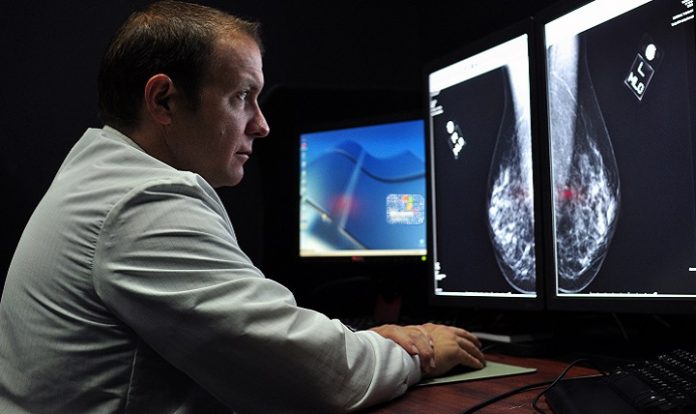Recently, Baidu Research revealed that it had created a deep learning algorithm that has proven to be better in identifying breast cancer metastasis in its initial tests.
Experts involved in the exercise-trained the convolutional neural net through splitting 400 massive images into grids made up of numerous smaller images before randomly choosing 200,000 of the smaller images. Subsequently, the algorithm conducts analysis in a bid to categorize each of the smaller photos and its neighbouring cells.
Numerous algorithms have been unveiled to aid pathologists in examining images, which can be gigabytes in size, by reducing them into smaller pieces.
With that, Baidu Research’s algorithm looks forward to pushing this method ahead through imitating a pathologist’s technique to scrutinize the region surrounding a breast cancer tumor cell, examining both individual and adjacent cells at once.
Yi Li, a machine learning expert at Baidu’s Silicon Valley Artificial Intelligence Laboratory, recently told VentureBeat that the company has taken the grid of images and is predicting whether each of the cells is either normal or tumor cells through modeling their spatial correlations.
Being aware of the spatial correlations that exist between each of the patches allows the algorithm to make more confident predictions.
MORE – Top 10 Ways Artificial Intelligence is Impacting Healthcare
Baidu Research’s algorithm scored 80.9 higher compared to the 72.4 average scored by human pathologists on the FROC score, which is a measurement that considers the average detection sensitivity coupled with six predefined false-positive rates for a single slide.
The algorithm also scored higher than the 80.74 score attained by the Camelyon16 challenge’s winner. Consortium for Open Medical Image Computing organized the competition. Aside from Baidu’s algorithm, Google AI research’s cancer detection algorithm scored 89 on the FROC score.
The images utilized in training Baidu ’s algorithm were acquired from the Camelyon 16 challenge. They are made of a mixture of images without tumors, images with tumors as well as those images that have not been classified in any way.
Computer vision has been regarded as one of the most budding artificial intelligence forms to date thanks to its power to recognize various conditions such as diabetic retinopathy or skin cancer from images in a bid to categorize medical images at rates better than or equal to medical professionals.
Li also said that Baidu Research was planning to open-source its algorithm in an attempt to push forward the development of the method to consider the health of nearby cells.
According to Li Yi, Baidu is currently trying to open-source the algorithm in a bid to ensure that both the entire medical research fraternity and health care industry benefit.
The company is considering additional partnerships with hospitals and other medical institutions in order to test whether its algorithms can be used in clinical settings. This exercise will allow Baidu to test the algorithms in a larger dataset to assess whether they can hold high accuracy levels or outdo experienced pathologists.
Recently, researchers from New York University open-sourced breast density classification coupled with deep convolutional neural networks. Breast density plays an important role in image analysis, particularly for breast cancer screenings.
Source VentureBeat
